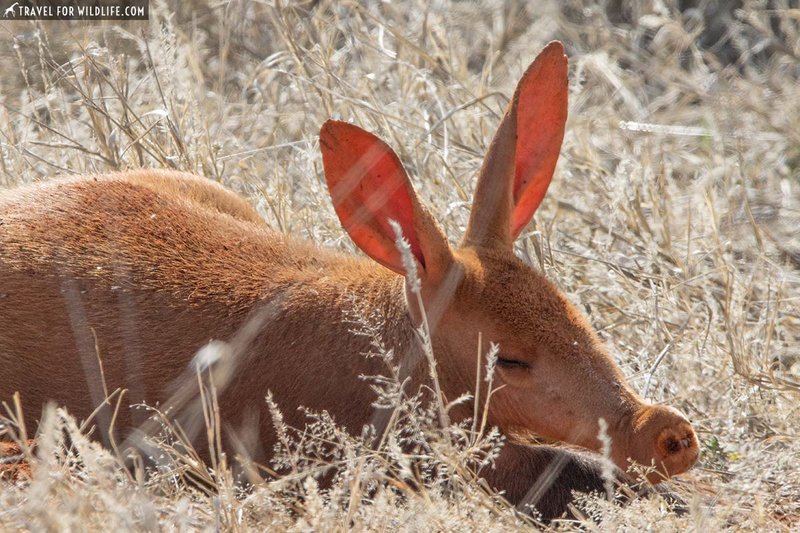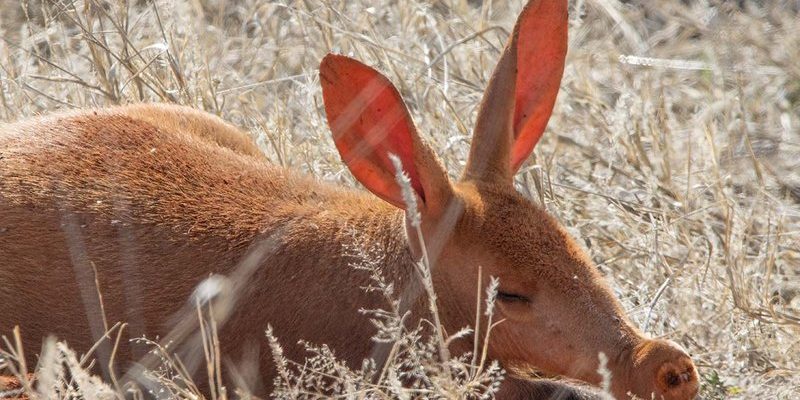
The aardvark is one of those fascinating creatures that might not get as much attention as lions or elephants, but it’s definitely unique in its own right. Imagine a combination of a pig and an anteater, with a touch of rabbit ears thrown in! These nocturnal animals have a fascinating lifestyle, spending their nights foraging for food and digging into the earth, and their days napping in cozy burrows. If you’ve ever wondered about this quirky animal, you’re in for a treat as we explore everything from its habits to its habitat.
Aardvarks are native to Africa and play an important role in their ecosystem. Their diet primarily consists of ants and termites, which they catch using their long sticky tongues. This makes them a kind of pest control for their environment, helping keep the population of these insects in check. Despite their somewhat awkward appearance and behavior, there’s a lot to admire about aardvarks. So, let’s dig in and learn more about these interesting creatures!
Physical Characteristics
Aardvarks are known for their distinctive features. With a body that can grow up to 2 meters long, they are quite large for an insect-eating mammal. Their skin is tough and covered in light brown fur, which helps them blend into their sandy desert habitat. One of the most striking things about them is their long, pointed snout that resembles a pig’s, which they use to sniff out their favorite food—termites. Their ears are long and erect, much like a rabbit’s, which aid in detecting sounds in their environment, especially during the quiet of the night.
One fascinating fact is that aardvarks have strong digging claws. These claws allow them to dig deep into the ground, creating extensive burrows that provide shelter and help them find food. Their feet are uniquely adapted to support this lifestyle; they have large, flat pads that keep them stable while digging. All of these characteristics come together to create a creature that is perfectly built for its nocturnal lifestyle in the wild.
Diet and Feeding Habits
Aardvarks are often referred to as “antbears” because of their primary diet: ants and termites. They have specialized teeth that lack enamel, which means they don’t chew their food like we do. Instead, they swallow it whole! Their long, sticky tongues can stretch up to 30 centimeters, allowing them to slurp up as many insects as they can find in one go. Can you imagine having a tongue that versatile?
The feeding habits of aardvarks are particularly interesting. They primarily forage at night, which is part of their survival strategy as it helps them avoid the harsh sun and potential predators. When they locate a termite mound or ant hill, they use those powerful claws to dig an entrance, creating a huge mound of soil around them. This not only helps them reach their food but also creates homes for other animals after they’ve moved on.
Habitat and Distribution
Aardvarks are found throughout sub-Saharan Africa, in a variety of habitats that include savannas, grasslands, and even woodlands. They prefer areas where the soil is soft enough for digging, often near termite mounds. You might picture them in arid landscapes, but surprisingly, they can also thrive in more humid environments. They’re adaptable creatures, which is important for their survival, especially with changing climates.
Aardvarks are solitary animals, usually living alone or in small groups. Each individual tends to have its own burrow system, which can be quite extensive, sometimes consisting of multiple tunnels. These burrows not only provide shelter from the elements but also a safe place to escape predators. Imagine curling up in a cozy cave after a long night of foraging—it’s the perfect retreat!
Behavior and Social Structure
You might find it interesting that aardvarks are mostly solitary creatures, unlike many other animals that enjoy social interactions. They usually come together only for mating and then go their separate ways. This behavior is thought to help minimize competition for food, especially since their diet consists of ants and termites, which can be patchy in availability.
At night, aardvarks are quite active, roaming over large distances in search of food. They have a keen sense of smell, allowing them to detect hidden insect colonies underground. The way they navigate in the dark is remarkable; they rely on their acute hearing and sense of touch to move about quietly and avoid predators like lions or hyenas.
Reproduction and Lifespan
The mating season for aardvarks occurs during the warmer months, with a gestation period lasting about seven months. When a female gives birth, she usually has a single cub, which remains dependent on her for several months. During this time, the mother provides not only food but also protection from potential threats. This nurturing is vital for the cub’s survival as it learns to navigate the wild.
Aardvarks can live up to 23 years in the wild, but many don’t reach that age due to predators and other environmental challenges. In captivity, where they are protected, they can live even longer. It’s fascinating how their instincts and behaviors have evolved to help them survive in a world filled with dangers.
Conservation Status
Currently, aardvarks are not considered endangered, but they do face threats from habitat loss and hunting in some areas. As humans expand their territories and encroach on natural habitats, these quirky creatures may find themselves without the resources they need to survive. Conservation efforts are crucial to ensure that aardvarks continue to thrive in their natural environments.
Organizations are working to educate communities about the importance of preserving wildlife and their habitats. By raising awareness and promoting sustainable practices, we can help protect the future of aardvarks and other wildlife that share their home. After all, every species plays a role in the ecosystem, and losing one can have unexpected consequences.
Interesting Facts
| Scientific Name: | Orycteropus afer |
| Size: | Up to 2 meters long |
| Weight: | Typically 60–80 kg |
| Diet: | Ants and termites |
| Habitat: | Sub-Saharan Africa, savannas, grasslands |
| Lifespan: | Up to 23 years in the wild |
| Activity: | Nocturnal |
FAQ
What is the aardvark’s primary diet?
The aardvark primarily feeds on ants and termites. Its long, sticky tongue enables it to capture these insects effectively. Aardvarks consume large quantities of insects, making them an important part of the ecosystem by helping regulate insect populations.
Are aardvarks social animals?
Aardvarks are generally solitary creatures. They typically prefer to live alone, although they may come together for mating purposes. This solitary behavior helps reduce competition for food as they seek out their prey at night.
How do aardvarks stay safe from predators?
To stay safe from predators, aardvarks utilize their burrows as shelters. These underground homes provide protection and a safe retreat. Additionally, their nocturnal habits help them avoid many daytime predators in the wild.
What kind of habitat do aardvarks prefer?
Aardvarks thrive in various environments across sub-Saharan Africa. They prefer soft, sandy soils for digging and tend to inhabit savannas, grasslands, and even wooded areas where they can easily access their favorite food sources.
How do aardvarks dig for food?
Aardvarks have powerful digging claws that allow them to excavate termite mounds and ant hills. They dig with great speed, creating a noticeable mess around them as they rummage for food. This ability also provides burrows for shelter.
What is the aardvark’s role in the ecosystem?
Aardvarks play a vital role in their ecosystem by controlling insect populations. Their feeding habits help maintain the balance of ant and termite colonies, contributing to the health of their environment. This makes them essential for ecological stability.
Can aardvarks be kept as pets?
While aardvarks are fascinating animals, they are not suitable as pets. They require specialized care, a particular diet, and large spaces to roam, which makes them challenging for most people to care for properly. It’s best to admire them in the wild or respected zoological settings.
How do aardvarks communicate with each other?
Aardvarks communicate mainly through vocalizations, which include grunting and snorting. These sounds can signal various behaviors, such as alarm or contentment. Additionally, they rely on their excellent sense of smell to gather information about their surroundings and potential mates.
Are aardvarks endangered?
Aardvarks are currently not listed as endangered; however, they do face threats from habitat destruction and hunting. Conservation efforts are crucial to ensure that they continue to thrive in their natural habitats and maintain their ecological roles.
Do aardvarks have any predators?
Yes, aardvarks do have predators, including lions, hyenas, and large reptiles. Their nocturnal lifestyle and ability to dig quickly into burrows help them escape these dangers. However, young aardvarks are particularly vulnerable to predation.
What special adaptations do aardvarks have?
Aardvarks have several adaptations that make them uniquely suited to their lifestyle. Their long tongues, powerful digging claws, and keen senses of smell and hearing are all crucial for finding and catching food while avoiding predators.
How can I help protect aardvarks?
You can help protect aardvarks and their habitats by supporting conservation efforts and organizations dedicated to wildlife protection. Advocating for sustainable practices in your community and raising awareness about the importance of biodiversity are also key steps in ensuring the future of aardvarks.

